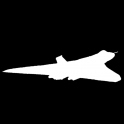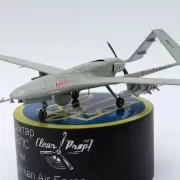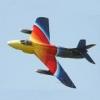

martenare
Members-
Posts
95 -
Joined
-
Last visited
Profile Information
-
Gender
Male
-
Location
Sweden
Recent Profile Visitors
martenare's Achievements

New Member (2/9)
109
Reputation
-

Grob 103 Twin Astir, Scratch build, Vacuum forming
martenare replied to martenare's topic in Work in Progress - Aircraft
No, I never finished it but I will hopefully get back to it in the near future. Thanks for asking and giving me the reminder! 😁- 45 replies
-
- 1
-

-
- Vacuum forming
- CNC
-
(and 1 more)
Tagged with:
-

Grob 103 Twin Astir, Scratch build, Vacuum forming
martenare replied to martenare's topic in Work in Progress - Aircraft
Thanks! I did not know that but now I don't have to do that mistake! Interesting idea! I might try that. I haven't tackled the wings yet so the attachment method is not decided yet. The only progress during the last few days is that I took delivery of my cockpit parts (2 panels and 2 seats). I designed them in Blender: And this is what they look like after being 3d printed:- 45 replies
-
- 2
-

-
- Vacuum forming
- CNC
-
(and 1 more)
Tagged with:
-

Grob 103 Twin Astir, Scratch build, Vacuum forming
martenare replied to martenare's topic in Work in Progress - Aircraft
Two male canopy moulds done in the cnc. I will follow BritJet's advice. The two canopies from the cnc will be lightly snaded primed and polished to a near perfect finish. They will subsequently be used to produce female moulds using BritJets method that he used for his Prentice. I thought it would be a good idea to make two as a backup should one of the female moulds fail. It would also be handy to have at least two female moulds on the vacuum forming machine at the same time in order to save time and material.- 45 replies
-
- 1
-

-
- Vacuum forming
- CNC
-
(and 1 more)
Tagged with:
-

Grob 103 Twin Astir, Scratch build, Vacuum forming
martenare replied to martenare's topic in Work in Progress - Aircraft
Thanks. I'll try the scoring!- 45 replies
-
- 1
-

-
- Vacuum forming
- CNC
-
(and 1 more)
Tagged with:
-

Grob 103 Twin Astir, Scratch build, Vacuum forming
martenare replied to martenare's topic in Work in Progress - Aircraft
I am trying to plan how to attach the wings securely and correctly. I’ve been given some good advice by bandsaw Steve and marklo and I have bought some brass tube but my big concern is the alignment of the wings. Below is my plan, please let me know if this would work or if there is a better way to do it: 1. CA glue 1.2mm Albion Alloys brass tube into the wings. Position it roughly around max camber of the wing. It will function as a spar as well as the attachment to the fuselage. 2. Open up a hole in the fuselage around max camber of the wing. Fuselage halves not joined at this point. Hole a good bit larger than the brass tube. 3. Slide a section of 1.6mm brass tube over the tube that is glued into the wing. 4. Place a ball of fresh miliput on the inside of the fuselage half. 5. Place the fuselage in the jig. 6. Align the wing in the jig and push the brass tube into the miliput. 7. Wait for the miliput to cure and it should now be possible to take off the wing while working on the fuselage. Will the milliput stick to the fuselage and the brass tube or do I have to use CA to glue it in place afterwards?- 45 replies
-
- 1
-

-
- Vacuum forming
- CNC
-
(and 1 more)
Tagged with:
-

Grob 103 Twin Astir, Scratch build, Vacuum forming
martenare replied to martenare's topic in Work in Progress - Aircraft
I decided to follow Marklo's advice and create a jig for my Twin Astir. I fired up Blender and created a little jig kit that my cnc milled from a 1mm styrene sheet. I then separated and cleaned up the parts before I glued my jig together. The only parts of the aircraft that I have glued together so far are the two stabiliser halves. The rest are still separate but the jig made it possible for me to bring all the parts together and get an idea of what it will look like when it is finished. So here they are just resting against the jig. The reason why I haven't glued the two fuselage halves together yet is that I am waiting for the cockpit parts. I have created the seats and instrument panels in Blender and sent it off to Shapeways for 3D printing. They should hopefully arrive later this week and I will then be able to get properly started with the build.- 45 replies
-
- 6
-

-
- Vacuum forming
- CNC
-
(and 1 more)
Tagged with:
-

Grob 103 Twin Astir, Scratch build, Vacuum forming
martenare replied to martenare's topic in Work in Progress - Aircraft
That sounds like a very sound plan. You are right in that my CNC would not produce a good enough surface and the material that I am milling also has microscopic pores that would not be fit for a canopy. A male mould could be primed and sanded to a good surface finish but I would, just like you said, struggle with the correct size. Your idea is much better and I will definitely try it. PET it is then. If I recall correctly, the canopies of the Twin Astir that I am building had a blue tint to them for sun protection. Are there plastic sheets with a blue tint available or do you think I can spray paint the canopy with a thin layer of blue? I just ordered a couple of clear PETg sheets 0.5mm. Should I have gone for thicker/thinner sheets? My better half would never allow me anywhere near the ovens with a plastic sheet in my hands. I had to invest in a small and very cheap oven for the garage in order to have somewhere to bake my plastic!- 45 replies
-
- Vacuum forming
- CNC
-
(and 1 more)
Tagged with:
-

Grob 103 Twin Astir, Scratch build, Vacuum forming
martenare replied to martenare's topic in Work in Progress - Aircraft
I haven’t decided on how to mould the canopy yet. I’ve found that the drawback with the female moulds is that all details from the moulds show up. That includes the imperfections of the mould surface. Male moulds are more forgiving as details don’t show up as clearly. I also think they are easier to sand and polish which makes them more suitable for canopies. I could try to estimate how thick the canopy plastic will end up and make a correspondingly undersised male mould.- 45 replies
-
- 2
-

-
- Vacuum forming
- CNC
-
(and 1 more)
Tagged with:
-

Grob 103 Twin Astir, Scratch build, Vacuum forming
martenare replied to martenare's topic in Work in Progress - Aircraft
Today was sanding day! I read through Steves super helpful topic where he thoroughly describes how he separates the vacuum formed parts for his Percival Prentice. If I end up with a model looking half as good as Steve's then I'll be more than happy. I initially tried to be clever and decided to sand the whole box around the parts as I thought this would give me a good grip. I turned out to be right about the grip but it took forever to sand such a large surface area. So I tried Steve's technique with a lump of masking tape attached to the part as a grip - which worked really well. I struggled quite a bit with getting the sanded surface even and I over sanded one wing half. It should be salvageable but the good thing about making your own vacuum formed model is that I can very easily produce a new part. The screwed up wing will probably be used as a training and experimentation wing. Here is a picture of the separated parts: And I did, of course, have to hold the fuselage halves together in order to get an idea of what the finished model will look like.- 45 replies
-
- 4
-

-

-
- Vacuum forming
- CNC
-
(and 1 more)
Tagged with:
-

Grob 103 Twin Astir, Scratch build, Vacuum forming
martenare replied to martenare's topic in Work in Progress - Aircraft
I got the two wing moulds tidied up and had some time to put them on the vacuum forming machine tonight. The detail has come out nicely so I think I am ready to start with the build. The first step will be to separate the parts from the styrene sheet. This is likely to be tricky as the parts need to be separated at the top of the styrene sheet in order to get the correct dimensions and shapes. I believe that the best method to achieve this is to sand away the styrene until there is just a thin film of plastic left - but how do I sand it evenly?- 45 replies
-
- 3
-

-
- Vacuum forming
- CNC
-
(and 1 more)
Tagged with:
-

Grob 103 Twin Astir, Scratch build, Vacuum forming
martenare replied to martenare's topic in Work in Progress - Aircraft
I have now managed to get the wing moulds milled in the CNC. I still need to remove the extra material and clean them up a bit but I can hopefully have the wings plus the right-hand side of the fuselage vacuum formed by tomorrow. That means that I am very close to starting to build this little glider. I have also started to think about how to actually build it once I have all the parts vacuum formed. I have nearly no experience with vacuum formed models so I am not sure what the best way to attach the wings would be? The Twin Astir wings have about 4 degrees dihedral - do I make a spar and attach that to a bulkhead in the fuselage? Some advice from would be greatly appreciated!- 45 replies
-
- 2
-

-
- Vacuum forming
- CNC
-
(and 1 more)
Tagged with:
-

Grob 103 Twin Astir, Scratch build, Vacuum forming
martenare replied to martenare's topic in Work in Progress - Aircraft
I actually think it is a bit misleading that both the original Twin Astir and the Viking T1 are called Grob 103. Wikipedia calls the Twin II (grob 103a) an unrelated design but from a modeling standpoint I would say they are very similar. It would not take much to convert my Twin Astir parts into a Viking. I chose to do it in 1/72 as I want to model all the aircraft of my career at the same scale. That will include the 737 which will be a little bit too big in 1/48, especially for my wife’s liking!- 45 replies
-
- 1
-

-
- Vacuum forming
- CNC
-
(and 1 more)
Tagged with:
-

Grob 103 Twin Astir, Scratch build, Vacuum forming
martenare replied to martenare's topic in Work in Progress - Aircraft
Yes definitely! I think the two most obvious differences are the nose wheel and the “drooped winglets” on the Viking.- 45 replies
-
- Vacuum forming
- CNC
-
(and 1 more)
Tagged with:
-

Grob 103 Twin Astir, Scratch build, Vacuum forming
martenare replied to martenare's topic in Work in Progress - Aircraft
Yes, I loved flying them as well (not that I had much else to compare with at that point). Some of my strongest flying memories are from the Twin Astir. I could probably send you over a “kit” once I have all the parts done.- 45 replies
-
- 1
-

-
- Vacuum forming
- CNC
-
(and 1 more)
Tagged with:
-

Grob 103 Twin Astir, Scratch build, Vacuum forming
martenare replied to martenare's topic in Work in Progress - Aircraft
Yes, It is now about 20 years ago since I flew a glider but I remember the club having a lot of focus on being careful with the canopies. We were for example strictly forbidden to move the aircrafts with a canopy open. The two Twin Astirs that we had had a retractable landing wheel. It would normally be covered with doors but the club had removed the doorsI and believe it was because the hinges easily broke.- 45 replies
-
- 2
-

-
- Vacuum forming
- CNC
-
(and 1 more)
Tagged with:




